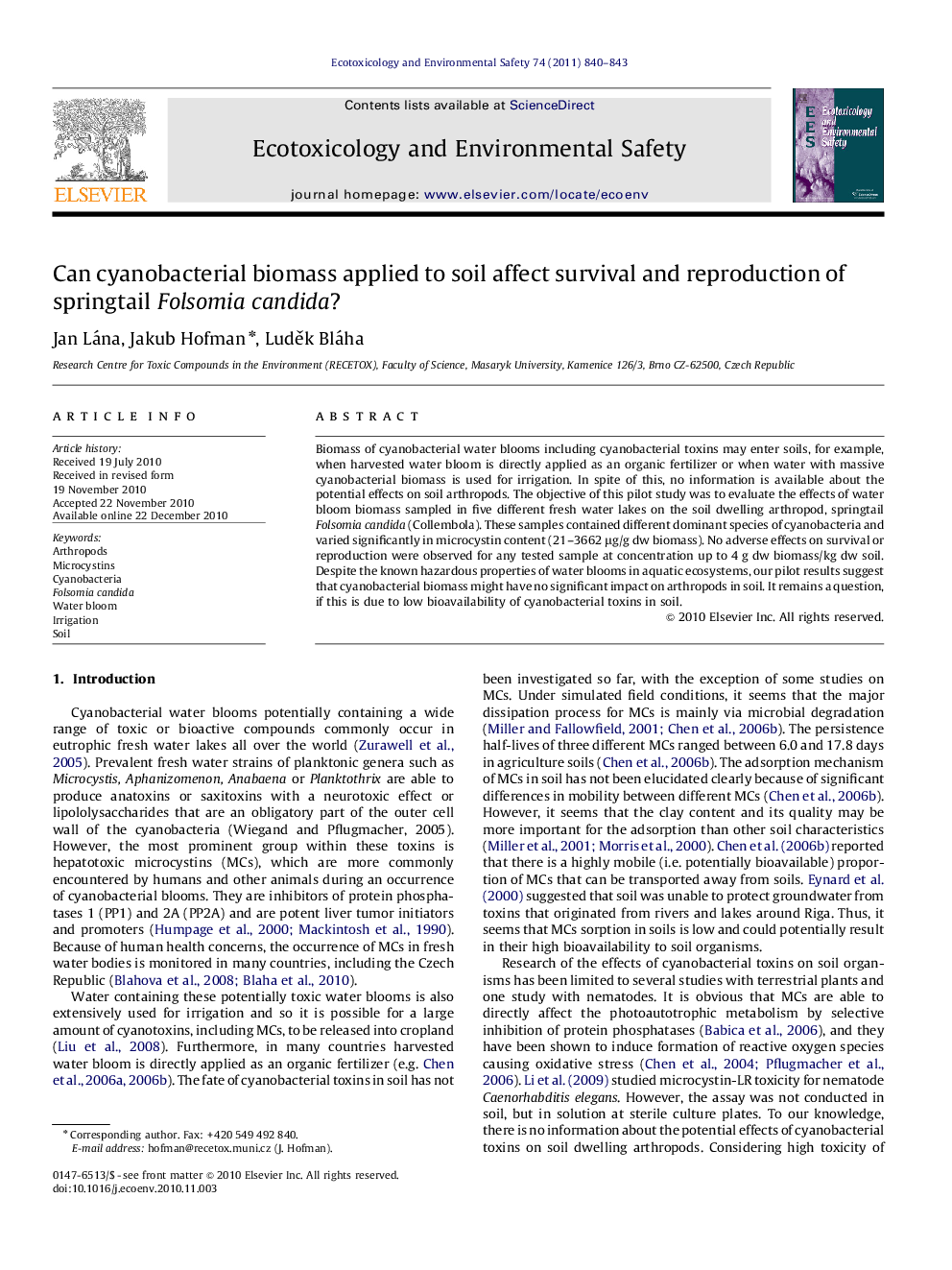| Article ID | Journal | Published Year | Pages | File Type |
|---|---|---|---|---|
| 4421466 | Ecotoxicology and Environmental Safety | 2011 | 4 Pages |
Biomass of cyanobacterial water blooms including cyanobacterial toxins may enter soils, for example, when harvested water bloom is directly applied as an organic fertilizer or when water with massive cyanobacterial biomass is used for irrigation. In spite of this, no information is available about the potential effects on soil arthropods. The objective of this pilot study was to evaluate the effects of water bloom biomass sampled in five different fresh water lakes on the soil dwelling arthropod, springtail Folsomia candida (Collembola). These samples contained different dominant species of cyanobacteria and varied significantly in microcystin content (21–3662 μg/g dw biomass). No adverse effects on survival or reproduction were observed for any tested sample at concentration up to 4 g dw biomass/kg dw soil. Despite the known hazardous properties of water blooms in aquatic ecosystems, our pilot results suggest that cyanobacterial biomass might have no significant impact on arthropods in soil. It remains a question, if this is due to low bioavailability of cyanobacterial toxins in soil.
